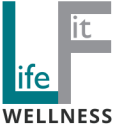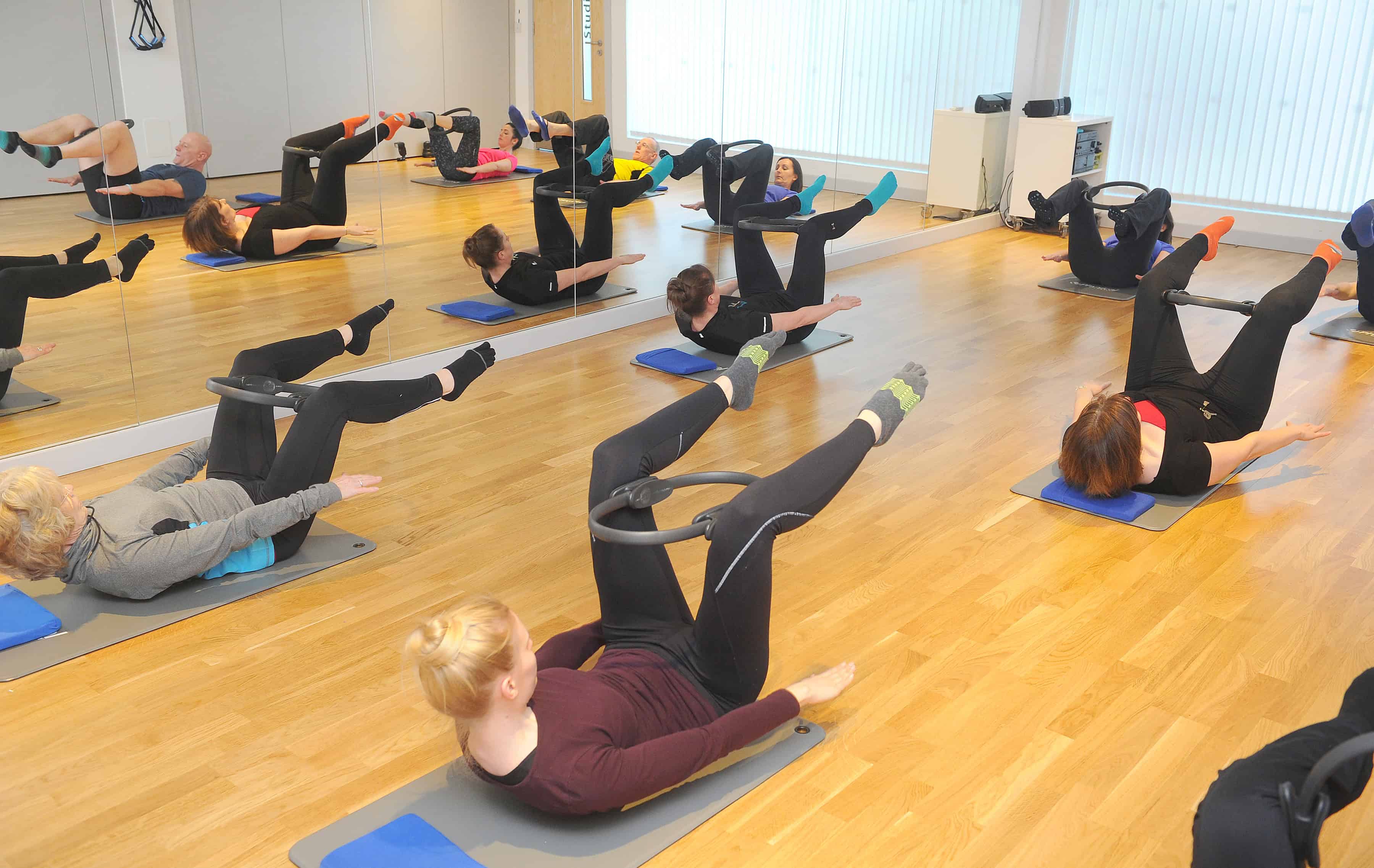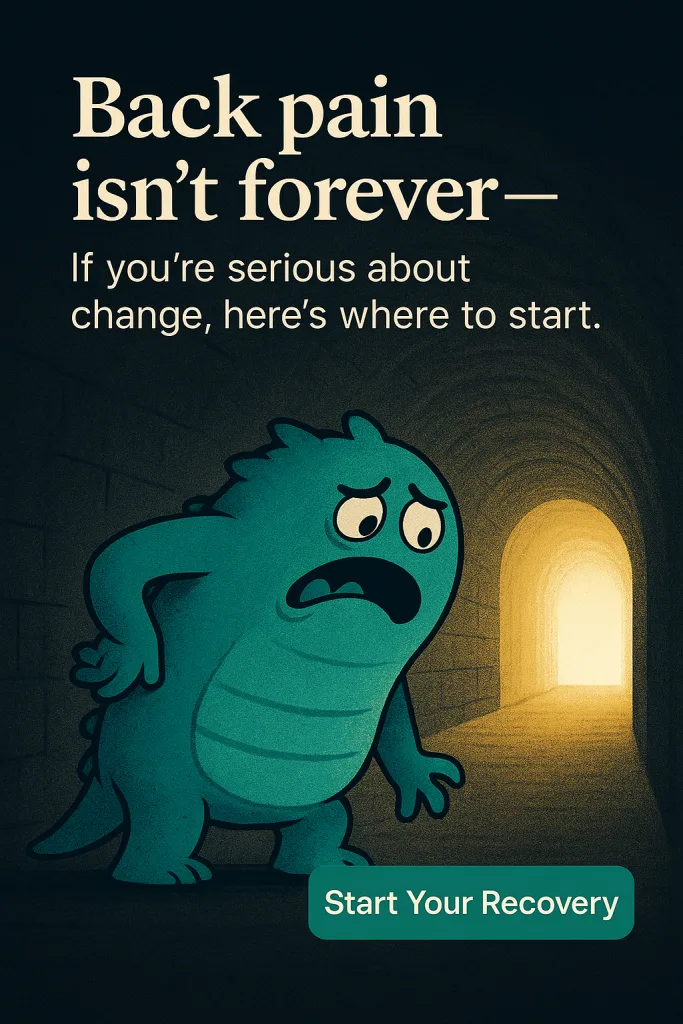Low back pain is extremely common, and Pilates is an effective way to relieve pain and tension. If you’re suffering from back pain, these 7 Pilates exercises can help ease discomfort and strengthen the muscles that support your spine.
It is estimated that 4 out of 5 people experience lower back pain at some point in their lives [1]. For some, this pain may be temporary, but for others, it can be a long-term issue. Pilates has been shown to relieve lower back pain by improving core strength, flexibility, and posture, while also helping to manage pain. But is Pilates good for back pain? Yes, studies have shown that Pilates can be effective for reducing pain, particularly in cases of nonspecific lower back pain [2].
Pilates vs Yoga for Back Pain
When comparing Pilates to yoga for back pain, Pilates may have a slight edge. Pilates focuses more directly on stabilising the core and spine, which is essential for alleviating lower back pain. Yoga can also be beneficial for back pain but involves a more holistic approach to flexibility and mental focus. Both practices can be helpful, but Pilates’ direct emphasis on core engagement makes it a better choice for targeting lower back pain.
Should You Workout with Lower Back Pain?
If your lower back hurts, it’s important to listen to your body. Gentle exercises, like Pilates, can help. However, if the pain is severe, it’s better to avoid intense workouts and focus on low-impact movements. Always consult with a healthcare provider before starting any new exercise program if you’re experiencing significant pain.
Check out our Back Fit: On Demand program which was expertly designed for people who have had an acute episode of back pain, chronic or recurring back pain, or who want to try and prevent back pain.
What is the Best Exercise for Lower Back Pain?
While there is no definitive “single best exercise” for back pain, exercises that focus on core stabilisation, such as the pelvic curl, are highly effective. The pelvic curl engages your abdominals and helps lengthen and support the spine, which can significantly reduce discomfort.
Research on Pilates for Injury Rehabilitation
Over the last decade and a half, research has consistently highlighted the benefits of Pilates for injury rehabilitation. One study found that Pilates helped reduce pain and improve quality of life in patients with chronic lower back pain [2]. Another study showed that Pilates improved muscle strength, flexibility, and posture in patients with traumatic spondylolisthesis at L4-L5 [3].
While more research is needed, the current evidence suggests that Pilates is an effective tool in injury rehabilitation.
Pilates Exercises for Lower Back Pain
These exercises are designed to target the muscles that support the spine. Before trying any of these exercises, especially if you have recurring or severe back pain, consult with a healthcare provider. Here are 7 Pilates exercises that can help alleviate back pain:
1. Pelvic Curl
Pelvic Curl
A fundamental Pilates exercise that strengthens the core and mobilises the spine. Great for improving posture and back strength.
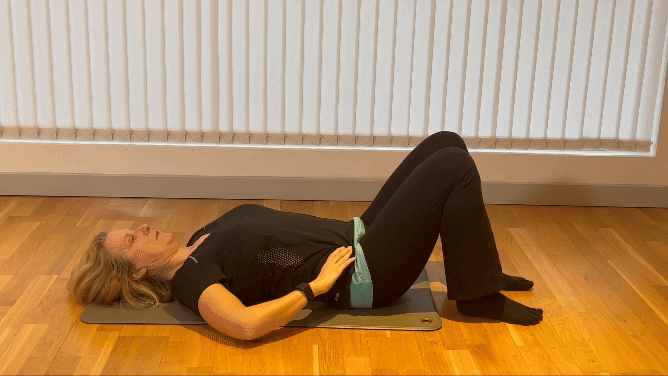
This foundational exercise teaches how to activate the abdominals to support and lengthen the back. It helps improve core strength and stability.
- Lie supine with the knees bent and feet flat on the mat, hip-width apart. Place the arms by the sides with the palms facing down. Relax your neck, shoulders, and lower back.
- Inhale to prepare, exhale to set the core and slowly curl the pelvis and spine off the mat, one vertebra at a time.
- Inhale and hold at the top. The pelvis should be at maximum posterior tilt and a stretch should be in the hip flexors.
- Exhale and slowly lower the trunk. Roll down one vertebra at a time, returning to the starting position.
- Repeat the sequence ten times.
2. One Leg stretch
One Leg Stretch
Targets core stability while incorporating leg movement. Excellent for developing coordination and abdominal strength.
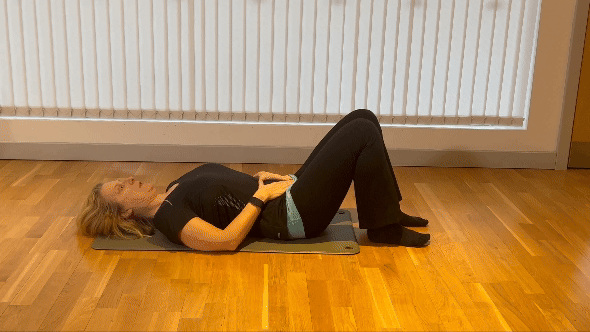
This gentle exercise strengthens the core muscles while maintaining constant contact with the floor, making it ideal for those new to Pilates or experiencing back discomfort. It helps develop abdominal control and leg coordination.
- Lie supine with the knees bent and feet flat on the mat, hip-width apart. Place your hands behind your head with elbows wide and neck relaxed, maintaining contact between your shoulders and the mat.
- Inhale to prepare, exhale to engage your core by drawing your navel toward your spine while keeping both feet in contact with the floor.
- Inhale as you slide one leg out along the floor, extending it fully while maintaining the bent position of the opposite leg. Keep your lower back pressed into the mat.
- Exhale as you slide the extended leg back to the starting position, keeping contact with the floor throughout the movement.
- Repeat the sequence with the opposite leg, alternating sides for ten repetitions on each leg.
3. Cat Cow
Cat Cow
A flowing movement that improves spinal mobility and flexibility. Great for warming up the back and strengthening core stability.
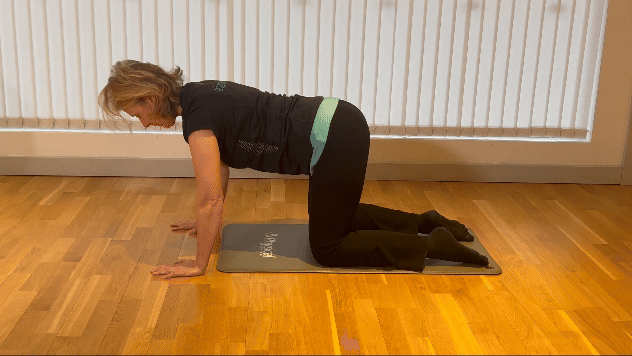
This gentle flowing movement combination helps improve spinal mobility and flexibility while strengthening the core and back muscles. It’s excellent for relieving tension and promoting proper posture.
- Begin on your hands and knees in a tabletop position. Place your wrists directly under your shoulders and knees under your hips, hip-width apart. Keep your neck long and gaze at the mat.
- Inhale to prepare, then exhale as you round your spine toward the ceiling (Cat). Draw your navel toward your spine, tuck your tailbone under, and gently lower your head between your arms.
- Inhale as you arch your back (Cow), lifting your chest and sitting bones toward the ceiling. Allow your belly to soften toward the mat while keeping your shoulders away from your ears.
- Exhale to return to Cat position, flowing smoothly between the two positions. Each movement should initiate from your core and move sequentially through your spine.
- Repeat the sequence ten times, moving with your breath and maintaining even weight distribution through your hands and knees.
4. Hip Twist
Hip Twist
Targets obliques and deep core muscles while improving spinal rotation. Excellent for developing waist definition and core control.
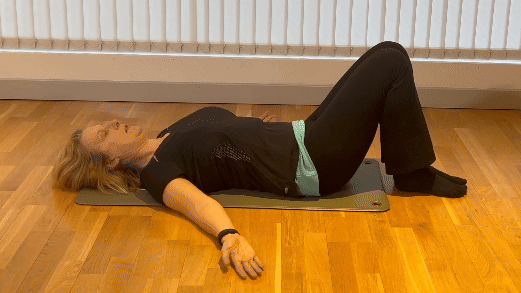
This exercise strengthens the obliques and rotational core muscles while improving spinal mobility. It’s an effective way to target the waist and promote proper core control.
- Lie supine with your knees bent and feet flat on the mat, hip-width apart. Extend your arms out to the sides in a T-position.
- Inhale to prepare, exhale to engage your core by drawing your navel toward your spine and press your lower back into the mat.
- Inhale as you lift your pelvis slightly off the mat and rotate your hips to one side, keeping your feet planted and shoulders pressed down. Think of moving your hip bones toward your opposite shoulder.
- Exhale as you return your pelvis to center, maintaining control through your core muscles and keeping your feet grounded throughout.
- Repeat the sequence alternating sides for ten repetitions each side, ensuring your shoulders stay connected to the mat and your movements remain smooth and controlled.
5. Shoulder Bridge
Shoulder Bridge
Strengthens glutes and hamstrings while stabilising the core. Great for improving posterior chain strength and spinal articulation.
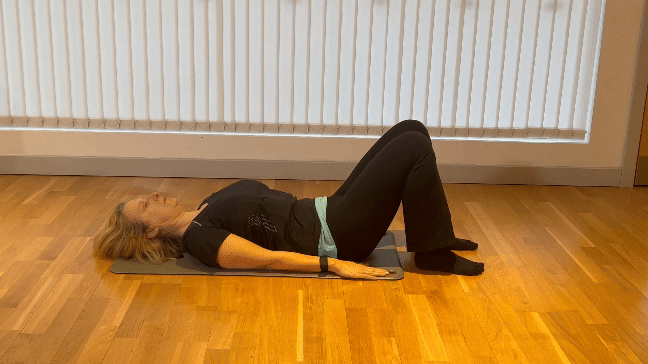
This dynamic strengthening exercise targets the glutes, hamstrings, and lower back muscles while promoting pelvic stability and spinal articulation. It’s excellent for building core strength and improving spinal mobility.
- Lie supine with your knees bent and feet flat on the mat, hip-width apart. Place your arms by your sides with palms facing down. Position your feet close enough to your buttocks that you can graze your heels with your fingertips.
- Inhale to prepare, exhale to engage your core and press into your feet as you begin peeling your spine off the mat, starting with your tailbone. Roll up sequentially through your spine, vertebra by vertebra.
- Inhale at the top position, where your body forms a diagonal line from your shoulders to your knees. Keep your core engaged and maintain a neutral spine position, avoiding excessive arching in your lower back.
- Exhale as you articulate your spine back down to the mat, beginning from the upper back and rolling down vertebra by vertebra, maintaining control throughout the movement.
- Repeat the sequence ten times, focusing on smooth, controlled movement and maintaining even weight distribution through both feet.
6. Spine Extension
Spine Extension
Strengthens back muscles and improves spinal mobility. Excellent for counteracting prolonged sitting and improving posture.
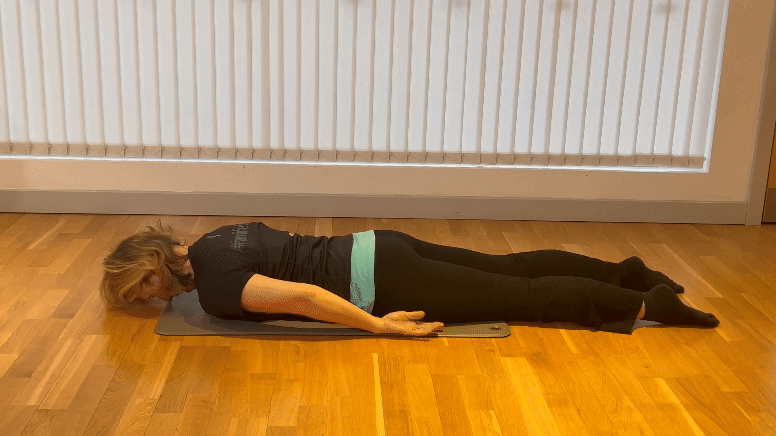
This strengthening exercise targets the back extensor muscles while promoting spinal mobility and postural awareness. It helps build strength in the muscles that support proper back alignment and counteracts forward-bending postures.
- Lie prone (face down) on the mat with your forehead resting on your stacked hands, elbows bent and pointed outward. Place your legs hip-width apart with toes pointed and pelvis heavy on the mat.
- Inhale to prepare, exhale to engage your core by drawing your navel slightly up toward your spine, keeping length through your lower back.
- Inhale as you lift your head, chest, and upper back off the mat, maintaining the connection of your pelvis to the mat. Keep your neck long and gaze slightly forward and down.
- Exhale as you lower back down with control, sequentially placing each vertebra back onto the mat, finishing with your forehead resting on your hands.
- Repeat the sequence ten times, keeping the movement gentle and controlled while maintaining the engagement of your core throughout.
7. Child’s Pose
Child’s Pose
Gently stretches lower back and promotes relaxation. Excellent for decompressing the spine.
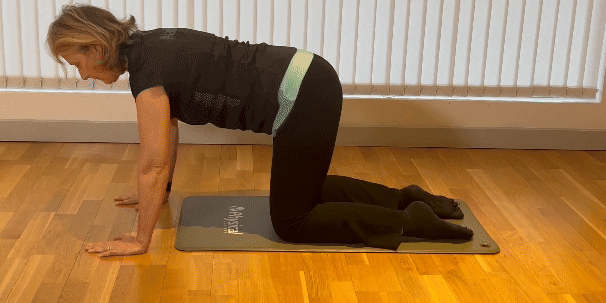
This gentle restorative position helps release tension in the lower back while stretching the hips, thighs, and spine. It’s an excellent resting posture that promotes relaxation and spinal decompression.
- Begin kneeling on the mat with your knees hip-width apart or wider, and your big toes touching behind you. Sit back on your heels, keeping your spine long and tall.
- Inhale to prepare, exhale as you fold forward from your hips, walking your hands out in front of you until your torso rests between or on your thighs.
- Inhale and feel the expansion of your back, focusing on sending your breath into your back ribs. Keep your arms extended forward with palms pressing gently into the mat.
- Exhale and allow your body to settle deeper into the pose, letting your shoulders melt away from your ears and your hips sink back toward your heels.
- Hold this position for 30 seconds to one minute, continuing to breathe deeply and allowing tension to release with each exhale.
How to Practice Pilates Safely with Back Pain
- Start Slowly: Begin with the gentler exercises and gradually progress to more challenging ones.
- Focus on Form: Proper form is key. It’s better to do fewer reps with correct form than many with poor form.
- Listen to Your Body: If an exercise causes sharp pain, stop immediately and consult a healthcare professional.
- Breathe: Deep breathing helps engage the core and maintain relaxation during the exercises.
- Consistency: Aim to practice Pilates 2-3 times per week for the best results.
- Use Modifications: If an exercise is too challenging, modify it to your current ability. A certified instructor can help tailor exercises
Final Thoughts
Incorporating Pilates into your routine can help manage back pain, improve posture, and build a stronger core. While it’s important to consult with a healthcare provider if you have chronic pain, Pilates is a gentle and effective way to reconnect with your body and work towards a healthier back. So, why not give these exercises a try? Your back will thank you!
If you are interested in trying out a Pilates class at Life Fit Wellness we offer a range of Pilates classes to suit your goals and requirements. This ranges from small group mat-based classes to a studio circuit class utilising reformers.
We have Pilates classes available at both our Falkirk and Linlithgow Facilities. If you happen to be based further afield or are unable to attend in person classes; make sure to check out our physio-led online Pilates classes which offer the same quality classes with instructor, Arlene Bowmaker, from the comfort of your home.
New to Pilates with Life Fit Wellness?
To ensure everyone has the best possible start both to maximise enjoyment and effectiveness, we provided an initial 1-to-1 session with one of our Pilates Physiotherapists. This gives you the opportunity also to discuss any goals or concerns you may have prior to embarking on a class. An introductory package including the individual session plus 3 classes (1 matwork, 1 equipment and 1 virtual) makes getting started easy. If YOU HAVE NOT done a Pilates 1-1, please call our reception team on 01324 614044 and they will provide you with information and help you find a suitable date and time.
Please note that we require everyone who is new to Pilates at Life Fit Wellness to attend an initial 1 to 1, even if you have attended Pilates elsewhere. This is to ensure your maximum benefit and safety during the classes.
[1] https://www.guysandstthomas.nhs.uk/health-information/low-back-pain
[2] Natour J, Cazotti Lde A, Ribeiro LH, Baptista AS, Jones A. Pilates improves pain, function and quality of life in patients with chronic low back pain: a randomized controlled trial. Clin Rehabil. 2015;29(1):59-68. doi:10.1177/0269215514538981
[3] Oliveira LC, Oliveira RG, Pires-Oliveira DA. Comparison between static stretching and the Pilates method on the flexibility of older women. J Bodyw Mov Ther. 2016;20(4):800-806. doi:10.1016/j.jbmt.2016.01.008
